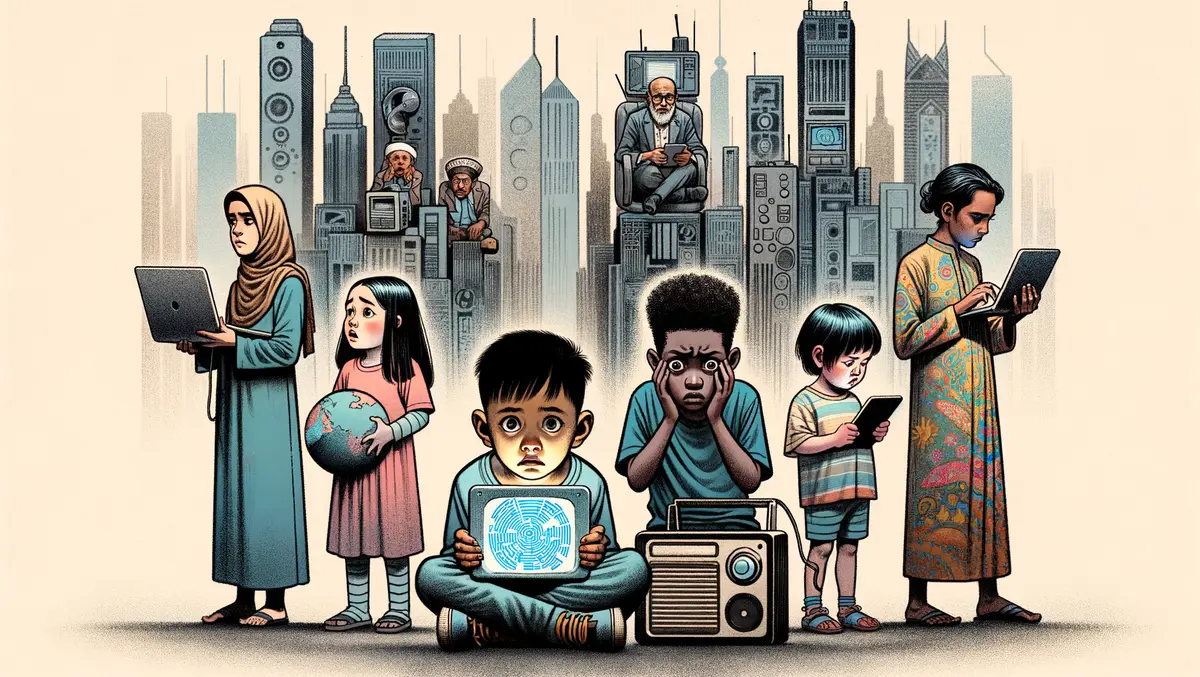
Digital poverty impacts one-fifth of UK's children, reveals Deloitte study
According to recent research from Deloitte and the Digital Poverty Alliance (DPA), 20% of children across the UK are enduring the consequences of digital inequality. This problem, often tied to household budgetary constraints, restricts access to electronic devices, impedes broadband connectivity, and stymies the development of digital skills.
The ongoing uncertainty surrounding the UK's economic landscape appears to be worsening conditions, with an increasing digital divide becoming more apparent, particularly in more deprived areas.
Elizabeth Anderson, CEO of the Digital Poverty Alliance, emphasised: "Digital exclusion remains a critical issue across the UK, made worse by the cost-of-living crisis squeezing household budgets and forcing families to make a choice between dinner or devices. This digital inequality is holding millions of school children back as they lack access to a device to complete online lessons or homework, causing their education to suffer."
Facing this prevailing issue, the DPA, in collaboration with Amazon, the Learning Foundation, charity partner In Kind Direct, and Tech First, initiated the Tech4Schools scheme in 2022. The programme aimed to provide underprivileged schools with devices and deliver digital skills training.
Anderson shed light on the initiative: "We launched the Tech4Schools team with our partners two years ago with the goal of increasing access to devices and skills for schools in disadvantaged communities and ultimately improving the education of children in those areas. Two years on, we've seen greater engagement from children with access to these devices as we lay the groundwork for a more prosperous future."
The Tech4Schools scheme has funded 23 schools in disadvantaged communities with devices and supporting peripherals for both in-school and home use. The program's impact was established through an analysis of device usage conducted by Nottingham Trent University. This research provided compelling evidence that greater device usage increased learners' digital self-efficacy, boosted their engagement with the scheme, and promoted broader participation in school activities. The analysis, grounded in the Technology Acceptance Model (TAM), explored factors such as perceived usefulness and satisfaction, intention to use, and perceived ease of use.
Though broadly beneficial, the scheme has provoked questions about eligibility criteria. Parents and teachers, however, have expressed that it has facilitated access to digital tools and resources, enabling learners to complete homework, and powerfully illustrated the scheme's potential to alleviate financial pressure on parents.
There are concerns that children are forced to depend on smartphones, often the only device available in their households. Despite the government's recent crackdown on mobile phones in schools, Anderson highlights their inadequacy for learning: "For some children, their mobile phone is the only device they own, or even their family owns, which is where the serious issue lies. Children shouldn't be relying on smartphones which are completely unsuitable for learning and are more likely to expose them to online safety concerns."
"Laptops are a learning tool which better protect children from those harms, with safeguarding software that prevents access to dangerous or inappropriate content. We need to focus on giving children the correct tools, like laptops, and understanding that smartphones aren't enough to tackle digital poverty in schools," said Anderson.


